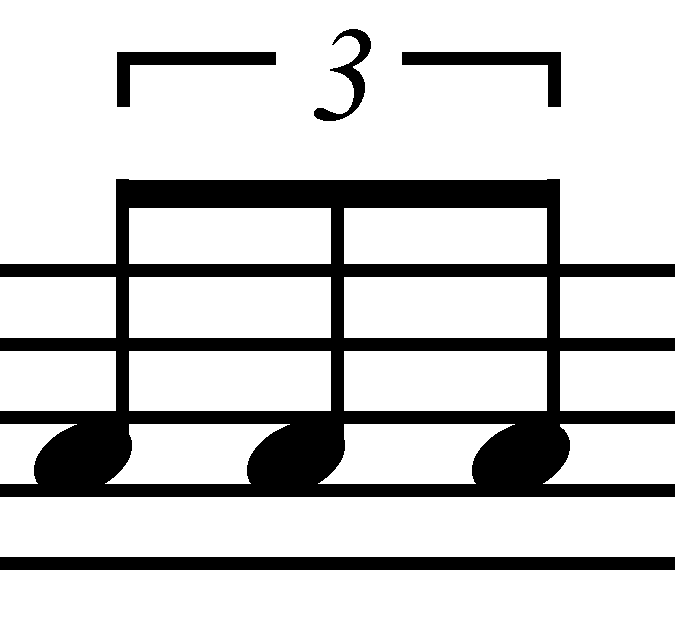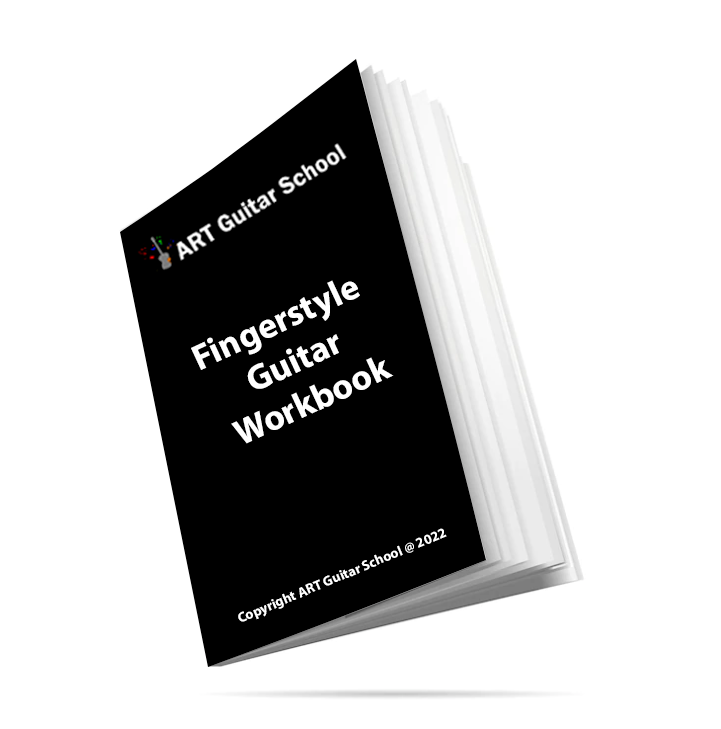One of the most common questions in regards to rhythm is how to play a triplet picking pattern. In order to do so you must first understand how a triplet works.
A triplet is split evenly into three parts within a quarter note. It’s like squeezing 3 eighth notes into one beat however, the duration of each is now slightly shorter due to the limited amount of time to fit each note within that beat.
Rhythm #1
Here is a quarter note pattern to start with. Pluck each note as one beat.
We added a half note at the end to fulfill the measure.

Rhythm #2
Now let’s try an eighth note pattern. Pluck two notes for each beat. They must fit evenly within the quarter note on the down and up beats.

Rhythm #3
Finally, this is the triplet pattern. I would recommend started by plucking only the first string with this rhythm. Count the rhythm as “one and ah, two and ah”.

Here is a video on popular finger picking patterns to start with:
If you were having trouble making the trip it’s even within the beat try using a metronome set a quarter notes 40 BPM and practice playing three notes within each beat.
FOLLOW US ON
Get our FREE Fingerstyle Workbook!
RELATED BLOG POSTS
Guitar Sweep Picking Exercises
Sweep picking is a technique that involves playing a series of notes on adjacent strings with a single pick stroke in a fluid, sweeping motion. It is commonly used in genres such as metal and fusion to create fast and flowing arpeggios. To master sweep picking, it is essential to practice specific exercises that will help improve your technique and coordination.
One of the most effective sweep picking exercises is to start with simple three-string arpeggios. Begin by placing your fretting hand on the 7th fret of the low E string and play the following pattern: E7, A9, D9. Use a downstroke to play the E string, then perform a fluid picking motion to sweep across the A and D strings. Repeat this pattern slowly and evenly, focusing on keeping your pick strokes smooth and consistent.
As you become more comfortable with three-string arpeggios, you can gradually increase the complexity of the patterns by adding more strings and incorporating different chord shapes. Practice sweeping up and down the strings in various patterns, using both major and minor arpeggios to develop your sweep picking proficiency.
Remember to start slow and gradually increase your speed as you build confidence with the technique. Strive for precision and cleanliness in your playing, as sweep picking requires a high level of coordination between your picking hand and fretting hand. By incorporating sweep picking exercises into your practice routine, you will enhance your overall guitar skills and unlock new creative possibilities in your playing.
Guitar Alternate Picking
Alternate picking is a fundamental technique for guitar players, allowing you to play fast and accurate lines with efficiency and precision. By mastering alternate picking, you can improve your speed, develop your sense of timing, and enhance your overall technical proficiency on the instrument.
To start practicing alternate picking on the guitar, begin by playing simple scales, licks, and exercises using the alternate picking technique. Alternate picking involves picking each note in a sequence with a downstroke and an upstroke, creating a smooth and even articulation. Practice playing these exercises slowly and evenly, focusing on clean and clear picking.
Next, work on developing your alternate picking technique by practicing different picking patterns and sequences. Experiment with string skipping, arpeggios, and scales to challenge your picking accuracy and speed. Use a metronome to help maintain a steady tempo and improve your sense of timing.
You can also practice alternate picking by incorporating this technique into your existing playing style. Try adding alternate picking to scales, licks, and solos to enhance your phrasing and create dynamic and expressive lines. Experiment with different accents and rhythms to create unique and engaging sounds.
By incorporating alternate picking into your daily practice routine, you can improve your speed, accuracy, and overall technical proficiency on the guitar, becoming a more versatile and expressive player.
Guitar Hammer-Ons and Pull-Offs
Hammer-ons and pull-offs are essential techniques for guitar players, allowing you to play fast and fluid lines without using your picking hand. By practicing hammer-ons and pull-offs regularly, you can improve your finger dexterity, enhance your phrasing, and develop your ability to play smooth and connected lines on the guitar.
To start practicing hammer-ons and pull-offs on the guitar, begin by learning the basic technique. For a hammer-on, use your fretting hand to play a note by hammering on the string with your finger, creating a quick and percussive sound. For a pull-off, use your fretting hand to pull off the string with your finger, sounding the note without picking.
Next, work on developing your hammer-on and pull-off technique by incorporating these techniques into scales, licks, and solos. Practice playing hammer-ons and pull-offs slowly and evenly, focusing on clean and clear articulation. Use a metronome to help maintain a steady tempo and improve your sense of timing.
You can also practice hammer-ons and pull-offs by experimenting with different finger combinations and patterns. Try playing trills, legato lines, and arpeggios to challenge your finger dexterity and coordination. Practice playing hammer-ons and pull-offs with speed and accuracy to improve your technical proficiency on the guitar.
By incorporating hammer-ons and pull-offs into your daily practice routine, you can improve your finger dexterity, enhance your phrasing, and become a more dynamic and expressive player on the guitar.




0 Comments